Feast or Famine? Breaking Down the State of the Economy
As Americans continue to feel misled by their government and struggle with the cost of living, Bitcoin increasingly becomes a viable alternative.
Swan Bitcoin Market Update #44
This Insight Report was originally sent to Swan Private clients on November 10th, 2023. Swan Private guides corporations and high net worth individuals globally toward building generational wealth with Bitcoin.
Benefits of Swan Private include:
- Dedicated account rep accessible by text, email, and phone
- Timely market updates (like this one)
- Exclusive monthly research report (Insight) with contributors like Lyn Alden
- Invitation-only live sessions with industry experts (webinars and in-person events)
- Hold Bitcoin directly in your Traditional or Roth IRA
- Access to Swan’s trusted Bitcoin experts for Q&A
Being an American today is a confusing experience. On the one hand, everything feels more expensive, and many are finding it harder to make ends meet. You see it in countless surveys, in social media posts, and hear it at the dinner table. People’s paychecks aren’t going as far as they used to, and many are struggling to afford basic necessities like food, shelter, and energy. But on the other hand, the government is telling them that the economy is strong and inflation is coming down. White House Press Secretary Karine Jean-Pierre even said with a straight face that this Thanksgiving dinner is “the fourth-cheapest ever, as a percentage of average earnings.” Anyone who actually stood in line at the grocery store during the holiday knows that something is not adding up here.
This messaging was echoed by U.S. Treasury Secretary Janet Yellen in a recent interview on CNBC, when she was questioned about a recent poll from the New York Times that found that 59% of people under 30 in the U.S. rate the economy as “poor.”
In response, Yellen made it sound like this was simply a misunderstanding. It was just a matter of raising awareness about the strength of the economy and that Americans would soon realize how good they have it today.
Instead of addressing the problem and coming up with solutions, government officials continue to gaslight the public and are even worsening the problem with their large spending deficits.
Despite the Federal Reserve trying to crush demand with its rate hikes, real GDP was revised higher to 5.2% annualized for the third quarter.
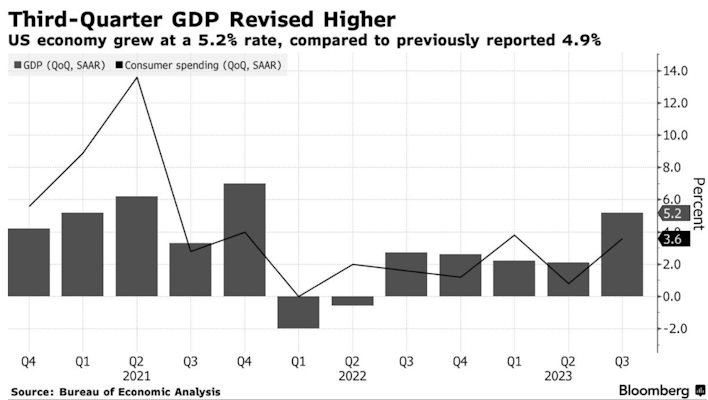
So, what could be causing the economy to continue to run hot? Well, the copious amounts of money printing that occurred in the pandemic certainly is still a factor here, along with massive fiscal deficits that only continue to grow.
The chart below estimates that government output has contributed nearly 1% of the overall 5.2% real GDP figure.
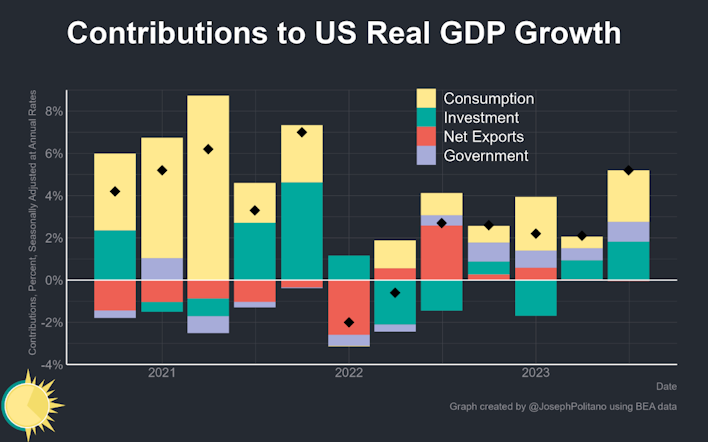
The next chart helps illuminate what is transpiring here. It shows a correlation between major countries’ GDP and their nominal public debt.
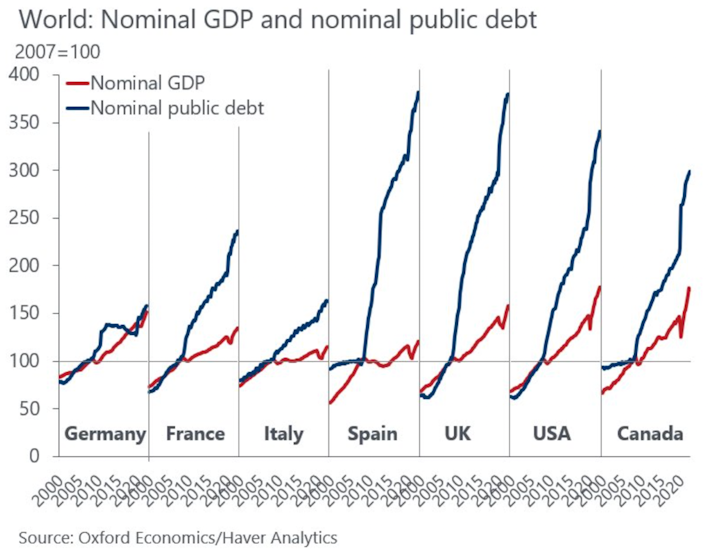
The trend is clear. As the public debt has exploded in the United States since the pandemic, so has nominal GDP. Since 2019, the national debt has grown by over $10 trillion! Is it really a surprise that GDP continues to run hot?
To make matters worse, the government is not just contributing to GDP through its borrowing but is also impacting it through its hiring.
The chart below from Hedgeye highlights how government hiring and wage growth have helped to keep US GDP afloat compared to the private sector.
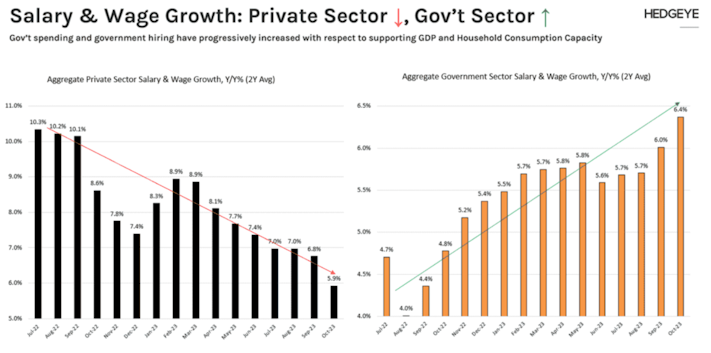
So, the government is not helping to bring down inflation; they are stoking it. And yet, the gaslighting continued yesterday when Joe Biden passed the blame off to corporations.

This victory lap from public officials on conquering inflation isn’t reflected in some other data as well, such as inflation expectations and business plans to raise prices.
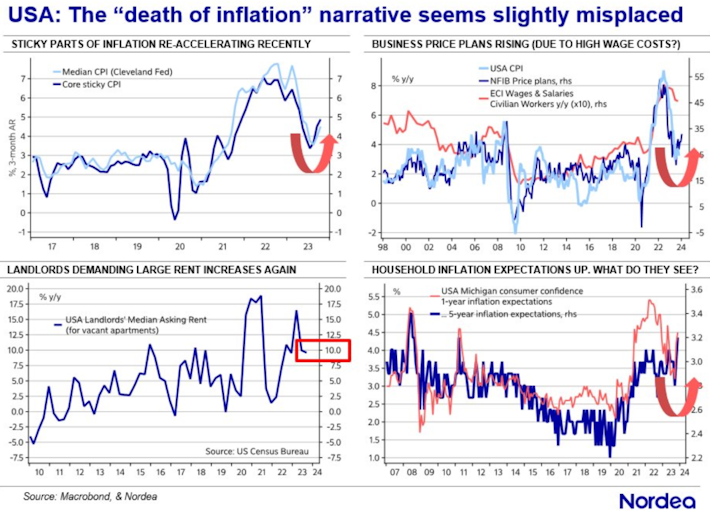
It’s also important to note that although the White House wants the public to believe that inflation coming down equals prices falling, this is not the case. Falling inflation simply means that the rate at which prices are rising is slowing. The actual price increases that have occurred in goods and services in the economy over the last couple of years will likely never return to pre-pandemic levels.
Bloomberg recently published an article that shared evidence of the cost of living crisis many Americans are facing today.
Here are some of the price increases Bloomberg calculated since 2020:
Groceries: +25%
Home Values: +42%
Electricity Bills: +25%
Natural Gas: +29%
Rent: +20%
Used Car Values: +35%
Car Insurance: +33%
Child care: +32%
This data reflects the reality that American households are experiencing on the ground, contrary to the narratives being pushed by elected officials.
The next question then arises: have wages kept up with inflation? The chart below highlights how real wages have only become positive this year as inflation has declined after two years of getting decimated.
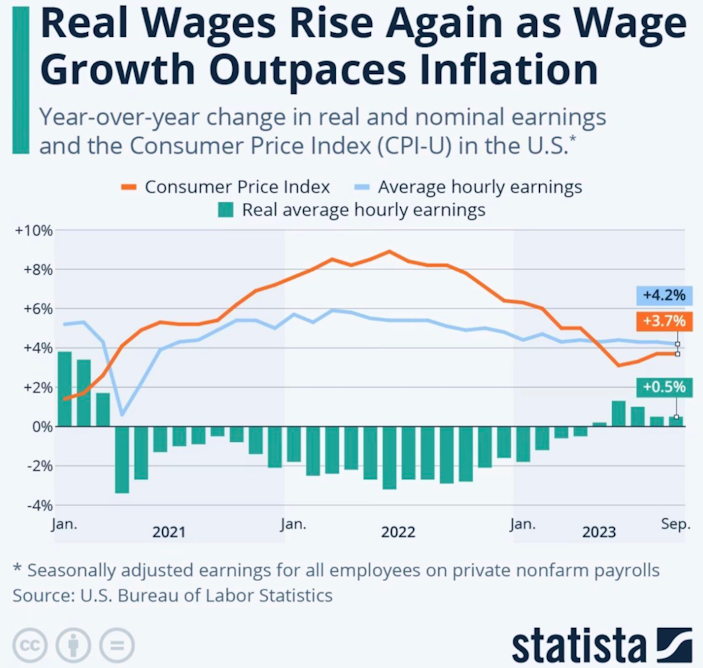
Now that wages are finally positive and inflation is declining, the Federal Reserve is also celebrating like their job is done despite the pain many Americans are still experiencing today.

The positive messaging on the inflation battle from Fed officials has many market participants thinking that the Fed is done with its hiking cycle. As a result, assets across the board have rallied.
After getting slaughtered all year, bonds had their best month in November since the 1980s.
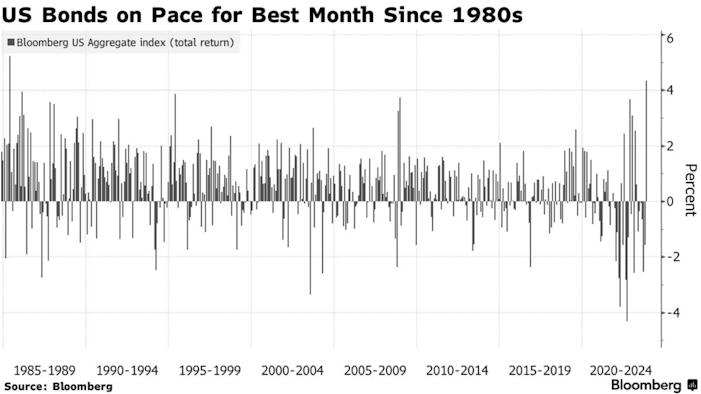
Market participants are piling into bonds with the expectation that 1) there will be no more further hikes, and 2) the Fed will eventually have to cut rates next year. The market currently gives a 100% probability of at least two Fed rate cuts in 2024.
But of course, if inflation does stick around for longer than these bond investors expect, then their positions will lose purchasing power in real terms over the long term.
This may be why we are seeing real assets like Bitcoin and gold rally. Gold recently hit a new all-time high.
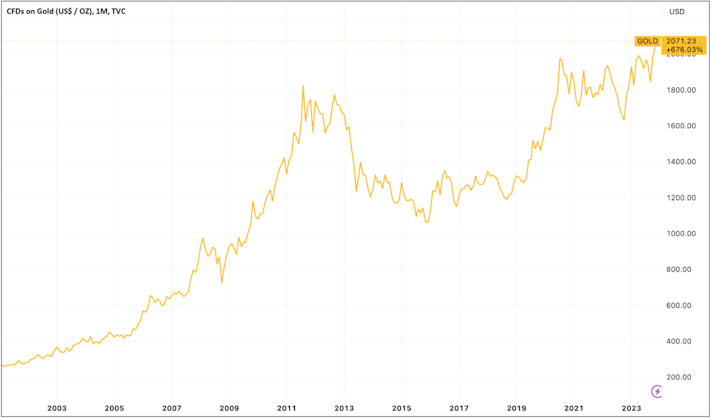
Historically, gold has moved inversely to rates, so with the market expecting rate cuts soon, this could explain part of the price action.
But investors may also be flocking to gold because they see the unsustainable nature of the U.S.’s fiscal position and are beginning to see the writing on the wall. Even Jerome Powell called the U.S.’s fiscal position “unsustainable” at a recent event.
Bitcoin could also be moving for the same reasons as gold, given its gold-like characteristics. Bitcoin recently hit an annual high, briefly touching $39,000 per bitcoin.
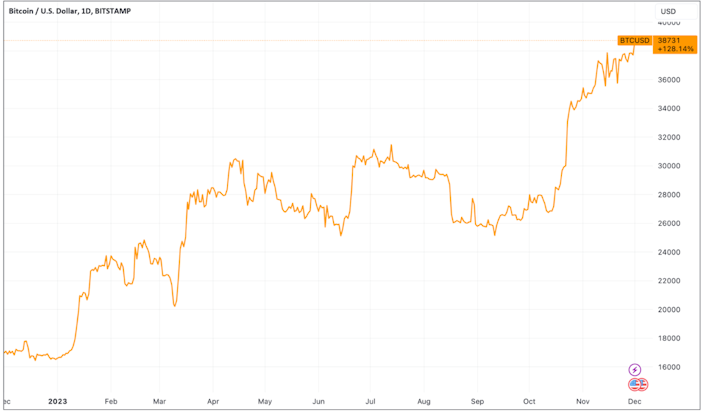
The primary catalysts currently influencing Bitcoin’s price include increased institutional adoption, the possibility of a Spot Bitcoin ETF approval, more regulatory clarity concerning the broader crypto industry, the upcoming halving event, and rising investor awareness around the unsustainable nature of the US’s fiscal position and Bitcoin’s potential as a hedge against reckless monetary and fiscal policies.
In recent months, there has been a favorable shift in sentiment amongst institutions and investors towards Bitcoin. The idea of allocating resources to a digital store of value that cannot be inflated away and requires no counterparty for ownership seems to be resonating with more investors in an environment of bank failures, trillion-dollar deficits, and ballooning debt levels.
With the demand for Bitcoin increasing, the available supply on the open market is decreasing. This is evident as 70% of Bitcoin’s available supply hasn’t moved in over a year, signaling that investors are holding. Additionally, this coming spring marks the quadrennial 'halving' event, where Bitcoin’s issuance rate will be cut in half. As appetite for Bitcoin grows, it is only becoming more scarce. These supply and demand dynamics will ultimately be what drive Bitcoin’s price into the New Year.
As Americans continue to feel misled by their government and struggle with the cost of living, Bitcoin increasingly becomes a viable alternative. Today, awareness around this new savings technology, and how it can protect investors’ purchasing power, has not yet reached the wider population. In the coming years, if inflation remains elevated, and the government and central bank continue with their harmful policies, more and more Americans will be searching for a solution to their money problems. Lucky for them, the solution has been being built for them for nearly 15 years now.
Market Overview
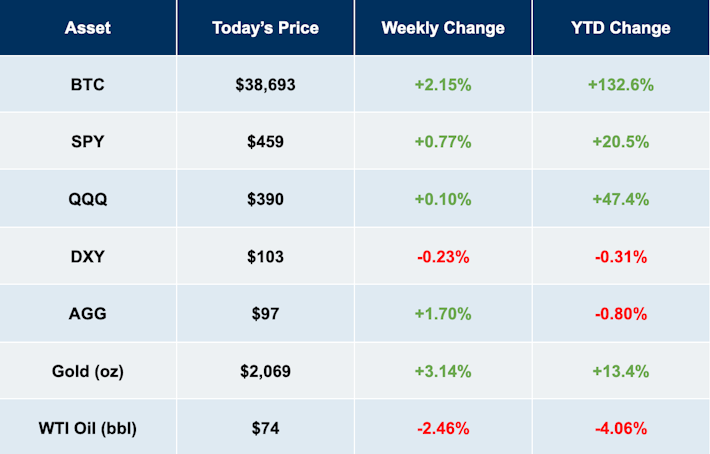
Sign up to start saving Bitcoin
Buy automatically every day, week, or month, starting with as little as $10.
Sam Callahan is the Lead Analyst at Swan Bitcoin. He graduated from Indiana University with degrees in Biology and Physics before turning his attention towards the markets. He writes the popular “Running the Numbers” section in the monthly Swan Private Insight Report. Sam’s analysis is frequently shared across social media, and he’s been a guest on popular podcasts such as The Investor’s Podcast and the Stephan Livera Podcast.
More from Swan Signal Blog
Thoughts on Bitcoin from the Swan team and friends.
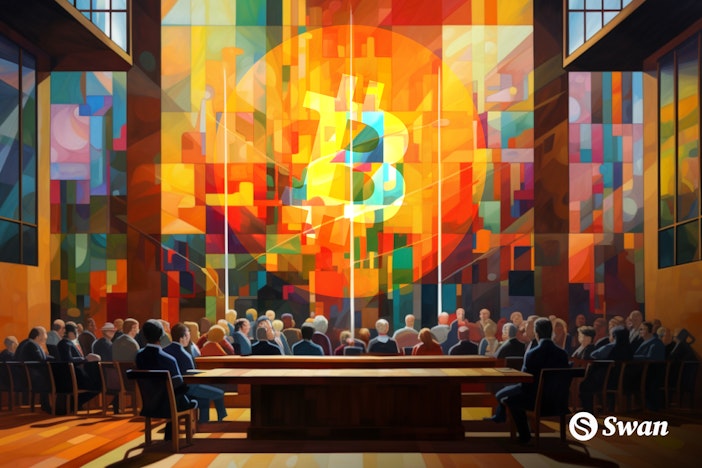

Running the Numbers: How Fiat Pushed the American Dream Away from Millennials
By Sam Callahan
Bitcoin symbolizes hope for a generation who increasingly feel as though their futures have been stolen from them by the traditional fiat system.
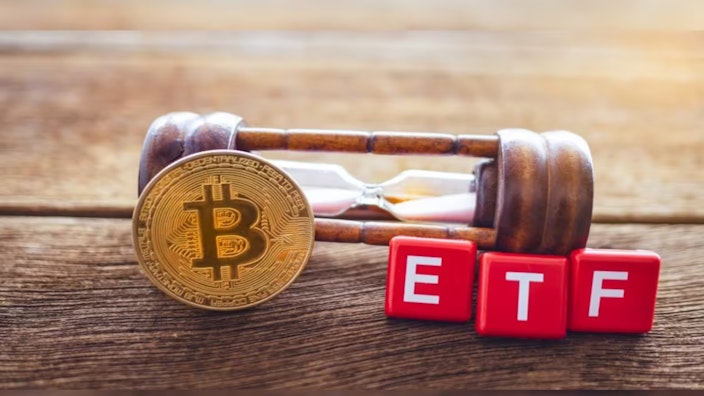

Best Bitcoin ETF Fees: Lowest to Highest (May 2024)

By Matt Ruby
In this guide, we analyze and present the top 10 Bitcoin ETFs with the lowest fees for cost-effective investing.


Privacy, Executive Order 6102 & Bitcoin

By Steven Lubka
Let’s keep pushing forward for the future we want to see, one in which both the price of Bitcoin and global freedom can go up together.
